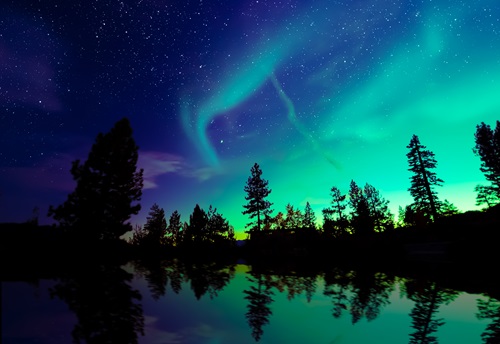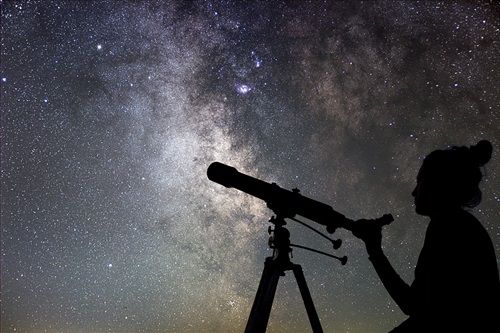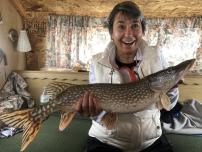
Photo © Angelina Cecchetto | Dreamstime.com
When, this past fall, the Northern Lights, also known as the Aurora Borealis, became visible to destinations that had never even heard of it before, much less seen it, there was an enormous uptick of interest in the skies.
Accordingly, people raced to destinations that had less ambient light and, cell phones, in hand, tried to capture the moment that had only come about because of a solar flare. The images were shared far and wide on social media.
Suddenly, there was more coverage of was going on overhead, something that had started earlier in the year, when a solar eclipse caused plenty of interest. And by the way, the economic impact of the eclipse was no joke, with tourists flocking to as the Path Of Totality (areas where the sun would be completely blocked by the moon, even if only for a short time).

But Dark Sky Tourism, defined as tourism that includes astrotourism and other special night-time activities, including moon-bathing, nocturnal creature guided tours, indigenous and cowboy storytelling, night sky inspired artistic events and more, just keeps growing. And at the moment, the epicenter of it all is Oregon.
In March 2024, Oregon became home to the largest Dark Sky Sanctuary, defined as an area where the night sky is almost perfectly dark, allowing dazzling viewing of stars, constellations, meteors and more.
And the state isn’t resting on its laurels, either; a second Dark Sky Park was just certified. In November, Oregon Caves National Monument and Preserve was named Oregon’s second international dark sky park. Located in southwestern Oregon, Oregon Caves National Monument and Preserve protects 4,554 acres of land and a network of marbled caves and formations beneath the Siskiyou Mountains.
And it’s not just a tourism claim; the certification comes from Dark Sky International, the organization that promotes restoration of the nighttime environment, and educates communities about the detrimental effects of light pollution. The group has certified more than 200 Dark Sky Places in 22 countries. (A full list of Dark Sky Parks in the USA can be found here.)
The certification efforts for Oregon are the latest result in a years-long effort led by federal, state, and local officials, community members and several legal jurisdictions. For the first Dark Sky Park to be certified, for examples, public officials and a variety of other stakeholders participated in night sky monitoring, lighting inventories, lighting improvements (it was instrumental in decommissioning 14 lights and retrofitting 60 lights on public and private land) and using public outreach to bring the nomination together.
And, since people want to go where there is no ambient lighting so that they can see the Aurora, meteor showers, comets, etc., don’t expect Dark Sky Tourism to stop growing. Particularly since 2025 is expected to be, well, star-studded, according to National Geographic:
- January 18: Saturn and Venus conjunction
- March 14: Total lunar eclipse and blood moon
- March 29: Partial solar eclipse
- June 26: Moon and Mercury appear close together
- August 12: Venus and Jupiter’s appearance appear close together
- September 7: Total lunar eclipse and blood moon
- September 19: Moon, Venus, and Regulus appear close together
- November 8: Saturn’s rings appear to vanish
- December 13 to 14: Geminid meteor shower peaks
- Aurora watching in 2025: In October 2024, representatives from NASA, the National Oceanic and Atmospheric Administration (NOAA), and the international Solar Cycle Prediction Panel announced that the sun has reached its solar maximum period, which could continue for the next year. Throughout 2025, stargazers can expect heightened solar activity, including sunspots and solar flares, which inevitably increases the chances of Earth experiencing strong, vivid auroras.
Proponents of Dark Sky Tourism, as well as astronomy tourism in general, say it is an excellent way of raising awareness of the interest in STEM (Science, Technology, Engineering and Math) as well as in the outdoors, and conservation as a whole.

And realistically, the sky is the limit for the ways the night sky can be promoted. Some destinations, such as Jasper, in Alberta, have created their own events focusing on the night sky, with everything from scientific presentations to concerts under the stars.
Stargazing, say tourism professionals, never gets old but it can be almost overwhelming to those who are new to it.
“It’s surprising sometimes to see that many stars all at once,” Bob Hackett, executive director of Travel Southern Oregon, told the Guardian’s Dani Anguiano. “It catches you, and it makes you pause because you feel like you can touch it … That vastness of the whole cosmos up there — it almost makes you get closer to the people you’re with on the ground.”

